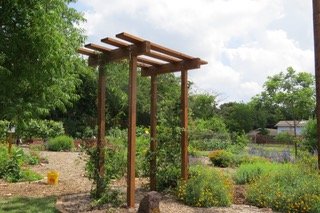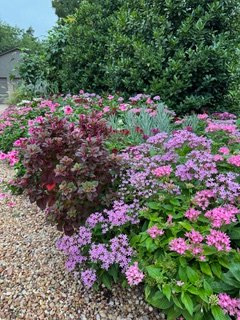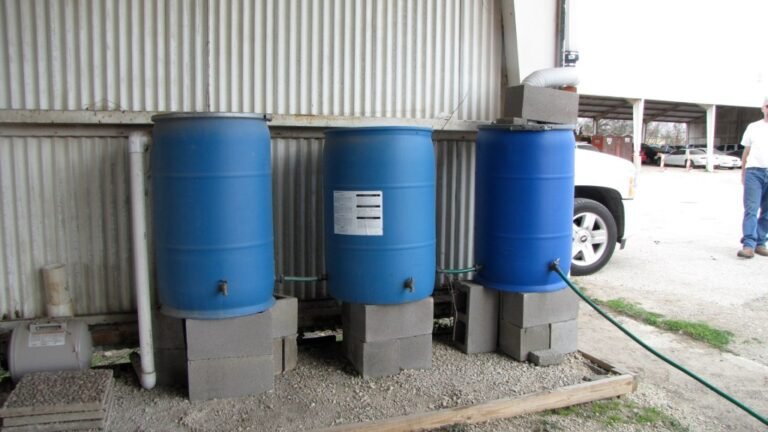
June 23, 2025
There is something transformative about walking under an arbor. It is a marker for some kind of change, possibly an entrance to a new space, or a transition from one area to another— One thing for sure, is that an arbor sets the space apart. Arbors come in a variety of shapes, sizes, and materials. It’s difficult to understand all the work that goes into putting up an arbor–Only when you see it unfold before your very eyes will you fully see the scope of the project. Thanks to all who take the time, make the plans, and see it to its final position in the garden.
At Raincatcher’s we’ve been reworking an arbor that was first constructed in 2012 as an Eagle Scout Project at Joe Field, a previous Dallas County Master Gardeners site. changes came and we relocated in November of 2014 to Raincatcher’s Garden of Midway Hills. It was reassembled at the entrance to the North Field Pollinator Garden in 2015.


This arbor served faithfully for several years, supporting multiple kinds of vines, such as passion vine (host plant for gulf fritillary butterfly), crossvine, coral honeysuckle and others added a touch of shade, some color, and best of all, the attraction of pollinators. In 2024(after about 12 years), the elements contributed to the deterioration of portion of the structure. Some of the original posts remained and were used in the new arbor.
Dallas County Master Gardeners and Raincatcher’s project specialists, Jon Maxwell (class of 2015 and Joe Labay (class of 2008) put a redo of this arbor on the to-do list. . Work began in January 2025 – first, devising a plan, then acquiring materials, and then came execution. This entailed many little things that made big differences, such as , measuring twice, or 3x if needed, so they cut once; leveling the wood and adjusting yet again. The original design was enhanced for functional and aesthetic purposes, the base was reinforced in concrete to better withstand the weather; more slats were added to the top, and the posts and beams leveled and adjusted numerous times.



It was meticulously assembled after measuring, sanding, painting and placement. Finishing touches included grading the walkway, mulching, adding decomposed granite, placing stepping stones and adding a brick border to complete this garden work of Art. The project took about 5 months, partially due to only meeting once a week on Tuesday mornings. At times, other issues took precedence, or weather altered plans. It has been well worth the wait!



We at Raincatcher’s are grateful for the commitment and expertise of Jon and Joe to make this beautiful arbor a reality.
It is a statement piece that welcomes everyone to walk under it and into a pollinator paradise. Come and stroll through the garden and check it out! We have workers at the garden on Monday mornings and Tuesday mornings; pollinators are more frequent. See you soon!
Starla Willis, DCMG class 2011, Jon Maxwell, class 2015, and Joe Labay class of 2008
Constructive tips:
* Use the best quality materials you can afford. The better the materials, the longer it is likely to last. Cedar is a better choice than treated lumber. Treated lumber, especially the 4×4 posts tend to warp badly unless thoroughly dry, which are hard to find at the box stores. Cedar, while more expensive, will last longer and will not warp. If treated lumber is chosen based on cost, be sure to prime and stain it immediately upon installation.
* Using materials from the existing arbor may save on the costs, but not necessarily time.
* Plan on it taking longer than you expect —projects have a way of evolving.
Starla Willis, DCMG class of 2011, Jon Maxwell, class of 2015, and Joe LeBay class of 20
Here’s our step by step decomposed granite walkway instructions.


